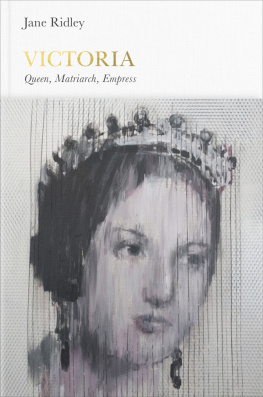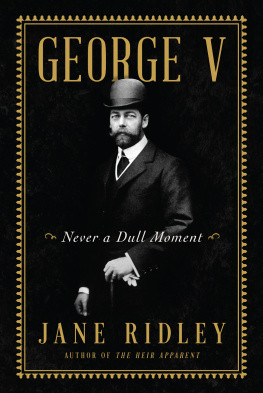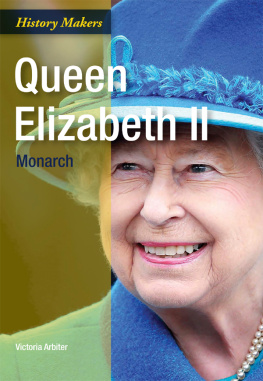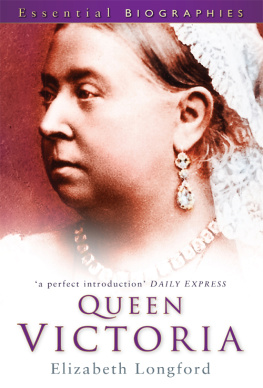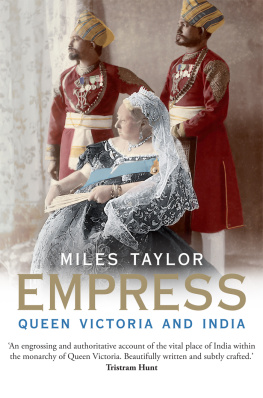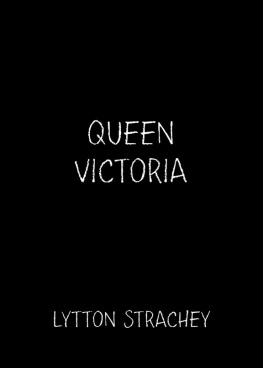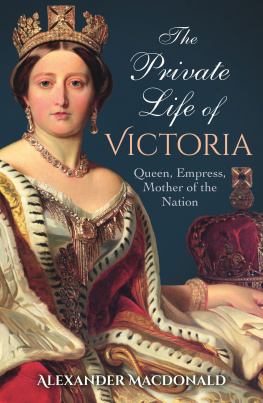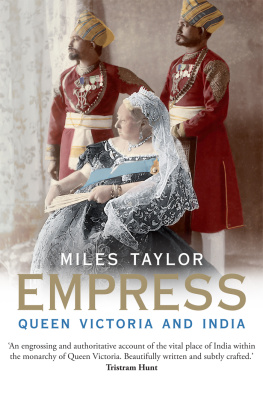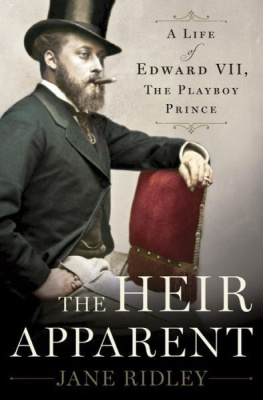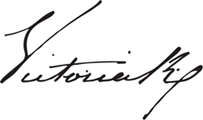Contents
Jane Ridley
VICTORIA
Queen, Matriarch, Empress
ALLEN LANE
UK | USA | Canada | Ireland | Australia
India | New Zealand | South Africa
Allen Lane is part of the Penguin Random House group of companies whose addresses can be found at global.penguinrandomhouse.com.
First published 2015
Copyright Jane Ridley, 2015
Cover design by Pentagram
Jacket art by Charming Baker
The moral right of the author has been asserted
ISBN: 978-0-141-97719-5
THE BEGINNING
Let the conversation begin...
Follow the Penguin Twitter.com@penguinukbooks
Keep up-to-date with all our stories YouTube.com/penguinbooks
Pin Penguin Books to your Pinterest
Like Penguin Books on Facebook.com/penguinbooks
Listen to Penguin at SoundCloud.com/penguin-books
Find out more about the author and
discover more stories like this at Penguin.co.uk
Penguin Monarchs
THE HOUSES OF WESSEX AND DENMARK
| Athelstan | Tom Holland |
| Aethelred the Unready | Richard Abels |
| Cnut | Ryan Lavelle |
| Edward the Confessor | James Campbell |
THE HOUSES OF NORMANDY, BLOIS AND ANJOU
| William I | Marc Morris |
| William II | John Gillingham |
| Henry I | Edmund King |
| Stephen | Carl Watkins |
| Henry II | Richard Barber |
| Richard I | Thomas Asbridge |
| John | Nicholas Vincent |
THE HOUSE OF PLANTAGENET
| Henry III | Stephen Church |
| Edward I | Andy King |
| Edward II | Christopher Given-Wilson |
| Edward III | Jonathan Sumption |
| Richard II | Laura Ashe |
THE HOUSES OF LANCASTER AND YORK
| Henry IV | Catherine Nall |
| Henry V | Anne Curry |
| Henry VI | James Ross |
| Edward IV | A. J. Pollard |
| Edward V | Thomas Penn |
| Richard III | Rosemary Horrox |
THE HOUSE OF TUDOR
| Henry VII | Sean Cunningham |
| Henry VIII | John Guy |
| Edward VI | Stephen Alford |
| Mary I | John Edwards |
| Elizabeth I | Helen Castor |
THE HOUSE OF STUART
| James I | Thomas Cogswell |
| Charles I | Mark Kishlansky |
| [ Cromwell | David Horspool] |
| Charles II | Clare Jackson |
| James II | David Womersley |
| William III & Mary II | Jonathan Keates |
| Anne | Richard Hewlings |
THE HOUSE OF HANOVER
| George I | Tim Blanning |
| George II | Norman Davies |
| George III | Amanda Foreman |
| George IV | Stella Tillyard |
| William IV | Roger Knight |
| Victoria | Jane Ridley |
THE HOUSES OF SAXE-COBURG & GOTHA AND WINDSOR
| Edward VII | Richard Davenport-Hines |
| George V | David Cannadine |
| Edward VIII | Piers Brendon |
| George VI | Philip Ziegler |
| Elizabeth II | Douglas Hurd |
For my sisters, Susy and Jessica
Introduction
It is one oclock and all, all is over! wrote Queen Victoria on 23 December 1861.
Victoria ordered the Blue Room at Windsor where Albert had died to be photographed and kept as a shrine exactly as he had left it, even to an open pocket handkerchief on the sofa. The same rituals were performed at Osborne. Some worried about her sanity. But the queen remained clear-headed. She was sure of one thing: she would not abdicate. On the day after the funeral she told her uncle, King Leopold of Belgium, that her work in life would be to make his wishes his plans my law !. I am also She would rule alone.
The death of Prince Albert was a hinge, splitting the life of the forty-two-year-old Victoria into two halves. The first part was almost a fairy story, or so it seemed. The unhappy princess, kept virtually a prisoner by her mother, had succeeded as queen four weeks after her eighteenth birthday. Her court was a Camelot, famed for its youth and gaiety. But, fatally ignorant of politics, Victoria was dancing to disaster. From this she was rescued by her marriage to Albert, in one of the great love matches of history. This is the romantic narrative of Victorias life, reprised in films such as The Young Victoria (2009). It is the story with which we are most familiar. Victorias early life has become a media industry, a spin-off from Jane Austen Inc.
The second half of Victorias life is strangely obscure. The Widow of Windsor hid from her people for forty years, and she has managed to elude her biographers too. As Lytton Strachey wrote, For her biographer, there is a darkness over the latter half of [Victorias] long career With Alberts death a veil descends. Defeated by this darkness and by the sheer weight of material her biographers Monica Charlot (1991) and Cecil Woodham-Smith (1972) abandoned ship in 1861. Elizabeth Longford (1964) was the first biographer to steer a course through the voluminous archives of Victorias life post-Albert. But only A. N. Wilson (2014), her most recent biographer, has shifted the focus to the second half of Victorias life, suggesting that Alberts death was a sort of liberation, allowing her to realize her true self after a painful struggle with her demons.
My first in-depth encounter with Queen Victoria came when I was writing a biography of her son, Bertie, later King Edward VII. I was astonished by the way she treated her children. Letters and reprimands rained down, penned in Victorias emphatic hand, heavily underlined, her nib digging deep into the paper. As a parent, Victoria seemed extraordinarily unsympathetic, especially to twenty-first-century eyes. It struck me that she had displayed all the characteristics of an angry, unloving mother during the time that was supposedly the happiest of her life her marriage to Albert. Perhaps the marriage was not so perfect after all. Perhaps the glossy Hollywood image of The Young Victoria is largely a myth. And Victorias later years, shrouded in mystery, are far more interesting than the we are not amused clich implies. There is, for a start, the question of how the diminutive and invisible queen became in her old age one of the most powerful women in the world, controlling her family, her dynasty and even European diplomacy.

